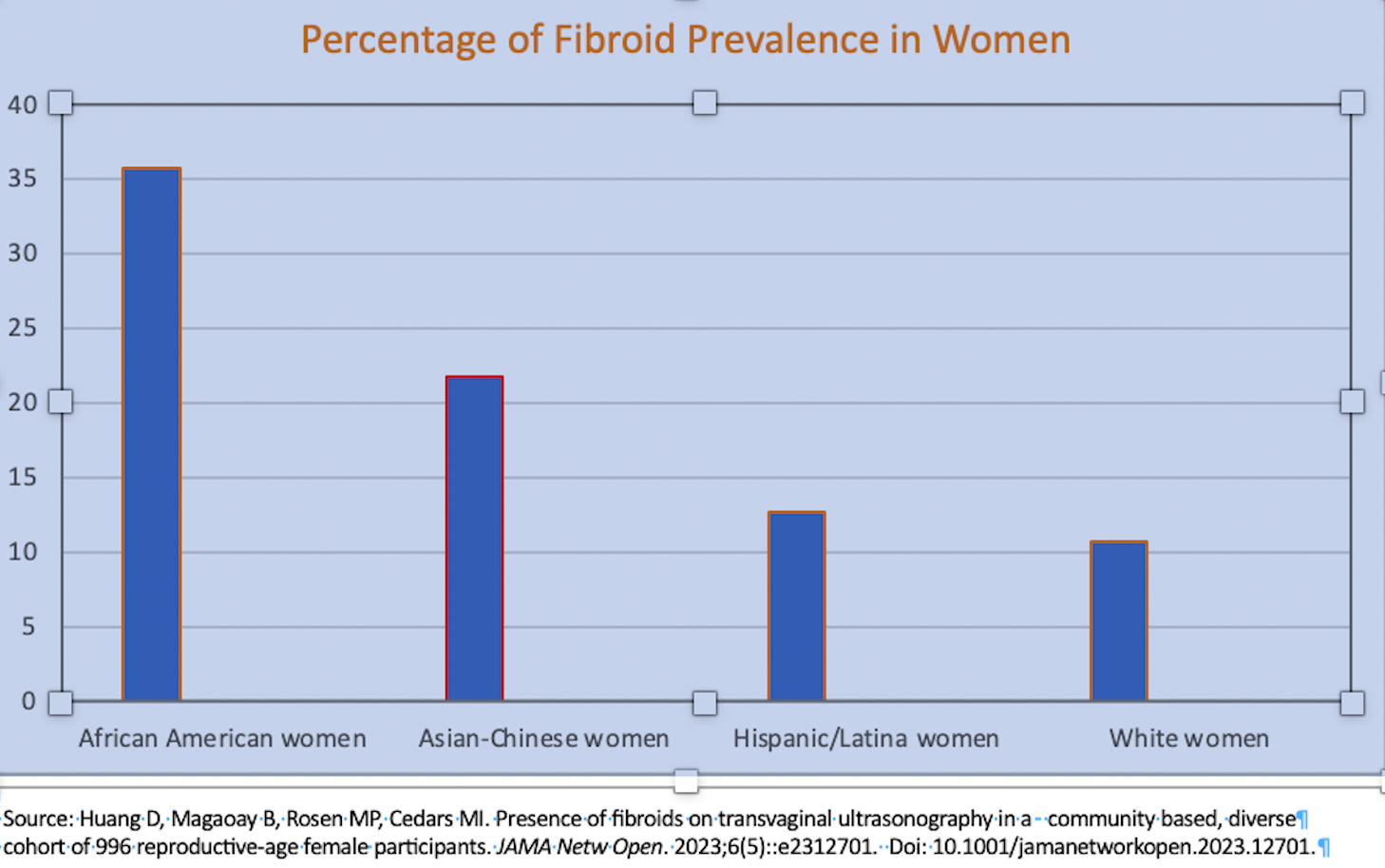What a Transvaginal Ultrasound Study Reveals About Fibroid Prevalence in Minority Women
African American and Asian-Chinese women have a disproportionately higher prevalence of fibroids, according to newly published transvaginal ultrasound findings in a diverse population of nearly 1,000 women.
Emerging transvaginal ultrasound research suggests that over a third of African American women and over one-fifth of Asian-Chinese women have uterine fibroids.
In the study, recently published in JAMA Network Open, researchers reviewed transvaginal ultrasound data from 996 women (ranging between 25 to 45 years of age) participating in a longitudinal study examining reproductive aging. The study cohort was comprised of White women (28.2 percent), African American women (25 percent), Hispanic or Latina women (23.8 percent) and Asian-Chinese women (23 percent), according to the study. The researchers said that all women in the cohort noted regular menses and had no history of pelvic surgery. Participants in the study were not receiving treatment for fertility or other conditions and had not taken estrogen- or progestin-containing medications in a three-month period prior to study enrollment.
The researchers found that 35.7 percent of African American women and 21.8 percent of Asian-Chinese women had fibroids (also known as leiomyomas) in comparison to 12.7 percent of Hispanic or Latina women and 10.7 percent of White women.

“The higher proportion of participants with uterine fibroids was observed in the Black or African American and Asian-Chinese cohorts across all age groups, suggesting some shared underlying risk factor(s) in these groups,” wrote study co-author Marcelle I. Cedars, M.D., the director of the University of California-San Francisco (UCSF) Center for Reproductive Health, and colleagues.
The study authors noted significant differences between African American women and Asian-Chinese women in the study in regard to the proportion of cases involving multiple fibroids and mean fibroid diameter (48.3 percent and 3.9 cm, respectively, for African American women vs. 26 percent and 3.2 cm, respectively, for Asian-Chinese women). These differences and Asian-Chinese participants having the lowest body mass index (BMI) out of the groups in the study cohort suggest that hormonal contribution is only part of a larger etiological puzzle for fibroid growth, according to Cedars and colleagues.
Citing a variety of literature, the researchers noted that vitamin D deficiency and high levels of endocrine-disrupting chemicals (EDCs), such as parabens and phthalates, may be common causal factors contributing to fibroid growth in these populations.
“Prior studies found Black individuals to have higher levels of phthalates compared with White individuals, possibly secondary to differences in use pattern of personal care products. Phthalates may potentiate fibroid growth by delaying apoptosis and promoting leiomyoma cell survival. … Limited data also show higher EDC levels in Chinese American female individuals,” noted Cedars and colleagues.
“Furthermore, in in vitro studies, vitamin D inhibits proliferation and extracellular matrix production in human leiomyoma cells. Deficient vitamin D levels, and their correlation with increased fibroid burden, have been observed in both Black and Chinese individuals.”
(Editor’s note: For related content, see “Transvaginal Ultrasound or MRI: Which is More Effective in Evaluating Endometrial Cancer?” and “Uterine Fibroid Embolization: Past, Present, and Future.”)
In regard to study limitations, the study authors noted that exclusions of pelvic surgery history and use of hormonal medications may have led to underestimation of fibroid prevalence and odds ratios in older age groups and at-risk groups such as Black women and Asian women. The researchers also pointed out that all of the Asian study participants were of Chinese descent, which may limit broader extrapolation of the findings in this cohort to other Asian ethnicities.
The Reading Room: Racial and Ethnic Minorities, Cancer Screenings, and COVID-19
November 3rd 2020In this podcast episode, Dr. Shalom Kalnicki, from Montefiore and Albert Einstein College of Medicine, discusses the disparities minority patients face with cancer screenings and what can be done to increase access during the pandemic.
What New Research Reveals About Novice Use of AI-Guided Cardiac Ultrasound
April 4th 2025In a study recently presented at the American College of Cardiology (ACC) conference, researchers found that novice use of AI-guided cardiac ultrasound after an AI-enabled electrocardiogram increased the positive predictive value for reduced left ventricular ejection fraction (LVEF) or aortic valve stenosis by 33 percent.
New AI-Enabled Portable Ultrasound May Facilitate 50 Percent Reduction in Cardiac Imaging Scan Time
March 28th 2025Artificial intelligence (AI)-powered measurement capabilities provide key features with the Compact Ultrasound 5500CV device, which was unveiled at the American College of Cardiology (ACC) conference.